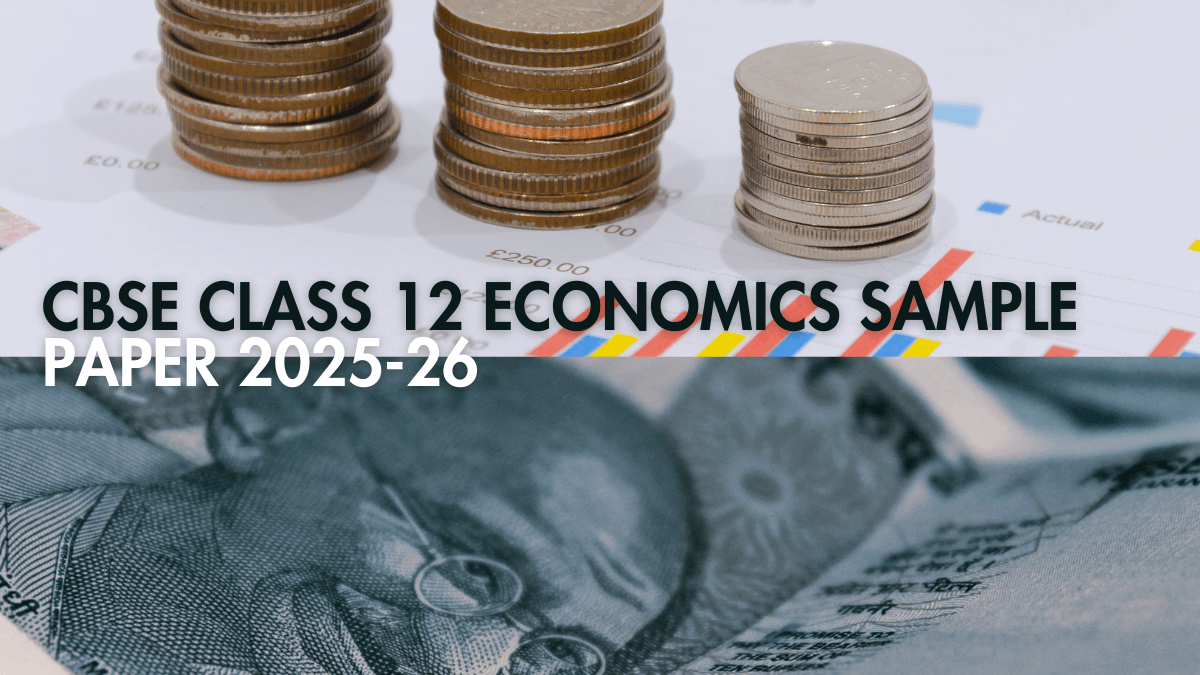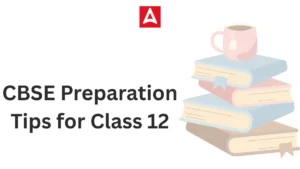Practicing CBSE Class 12 Economics Sample Paper 2025-26 along with practice tests has many advantages in your Board Exam. Commerce students can enhance their performance in the forthcoming CBSE 12th Economics Board Exam 2026 by practicing the complete Economics sample paper with answers. This paper consists of two major sections. Students should solve sample papers of the economics subject to better prepare themselves. Solving these allows students to determine the most essential and commonly asked questions.
CBSE Class 12 Economics Sample Paper 2025-26
Students will learn about the CBSE Class 12th exam pattern 2025-26 and marking scheme for the CBSE Class 12 Economics Board test for 2026. Regular practice of official exam-level questions improves your chances of scoring well in your exam. Download the Class 12th economics paper from this article to measure their level of preparation for the CBSE Economics test.
Economics Sample Paper 2025 Pattern
Students will become acquainted with the types of questions expected on the exam by reviewing the Economics sample paper 2025. The instruction of the official Economics sample paper is shared below.
I. The question paper has two sections:
Section A: Macro Economics
Section B: Indian Economic Development II.
II. This paper consists of 20 multiple-choice questions, each worth one mark.
III. This paper consists of 4 short-answer questions for 3 marks each, to be answered in 60-80 words.
IV. This paper consists of 6 Short Answer Type Questions with 4 marks each, to be answered in 80-100 words.
V. This paper consists of 4 Long Answer Type Questions worth 6 marks each, to be answered in 100-150 words.
Preparation Tips: CBSE 12 Class Economics Sample Paper 2025-26
It is imperative that students preparing for the 2026 CBSE 12th Economics exams pay heed to the preparation tips that follow.
1. Time table – a proper timetable is essential for preparations.
2. Go through the CBSE Class 12 Economics syllabus 2026
3. Practice, practice, practice with the past year’s question papers and preps for the CBSE 12th Class Economics exam 2026.
4. Make short notes of important points.
5. Revise regularly.
6. Take short breaks at regular intervals.
Economics Sample Paper 2025-26 PDF Download
Students studying for the CBSE 12th Economics subject should practice the sample CBSE Economics Question Paper 2025 Class 12. we have included a PDF of the CBSE Class 12 Economics Board Paper 2025 below. This is a free PDF, you can also get it from the official site of the Central Education Board. CBSE 12th Economics sample question papers are accessible here, along with the CBSE Class 12 Economics Question Paper 2025 PDF.
CBSE Class 12 Economics Sample Paper 2025-26 PDF
Advantages of solving CBSE Class 12 Economics Sample Paper 2025-2026 PDF
The advantages of resolving the CBSE Economics sample paper class 12 2025-26 are listed below:
- Understand the CBSE 12th exam pattern and marking scheme.
- Understand the difficulty level.
- Understand the type of questions asked in the CBSE Class 12th Economics exam 2026.
- Find the weaker areas that need more attention.
- Improve the confidence of the learners.
CBSE Class 12 Economics Sample Question Paper 2025-26
All questions of the CBSE Class 12 Economics Sample Question Paper for 2025 are discussed below –
SECTION A
1 With reference to the given diagram, which of the following is true at point B? (Choose the correct option)

A. Slope of Consumption Curve = 0
B. Average Propensity to Consume = 0
C. Slope of Saving Curve = 1
D. Average Propensity to Consume = 1
Note: The following question is for the Visually Impaired Candidates only, in lieu of Q.1
Identify which of the following is true at the Break-Even level of Income. (Choose the correct option)
A. Slope of Consumption Curve = 0
B. Average Propensity to Consume = 0
C. Slope of Saving Curve = 1
D. Average Propensity to Consume = 1
1
2 “Real Gross Domestic Product (GDP) is estimated to attain a level of ₹ 173.82 lakh crore in the year 2023-24. The corresponding Nominal GDP is estimated
to stand at ₹ 295.36 lakh crore in the same year.”
Source:https://pib.gov.in/PressReleseDetailm.aspx?PRID=2022323®=3&lang=1
On the basis of the given data, the value of GDP deflator would be _____. (Choose the correct option to fill up the blank)
A. 295.36 B. 58.85
C. 169.92 D. 173.82
1
3 “Money is non-perishable and is acceptable to anyone at any point of time.” Identify, the function of money indicated in the aforesaid statement and choose
the correct option.
A. Store of Value B. Medium of Exchange
C. Unit of Account D. Standard of Deferred Payments
4. Read the following statements carefully:
Statement 1: Devaluation of currency is said to occur when the exchange rate is decreased under the Fixed Exchange Rate System.
Statement 2: Under the Floating Exchange Rate System, competent authorities
do not maintain foreign exchange reserves.
In light of the given statements, choose the correct option from the following:
A. Statement 1 is true and Statement 2 is false.
B. Statement 1 is false and Statement 2 is true.
C. Both Statements 1 and 2 are true.
D. Both Statements 1 and 2 are false.
Statement 2: Under the Floating Exchange Rate System, competent authorities do not maintain foreign exchange reserves.
In light of the given statements, choose the correct option from the following:
A. Statement 1 is true and Statement 2 is false.
B. Statement 1 is false and Statement 2 is true.
C. Both Statements 1 and 2 are true.
D. Both Statements 1 and 2 are false.
5 Refer to the given diagram carefully:

The arrows C and D represent ______ Market.
(Choose the correct option to fill up the blank)
A. Factor B. Goods
C. Stock D. Financial
Note: The following question is for the Visually Impaired Candidates only, in lieu of Q.5
In a simplified economy, the flow of Factor Services from Households to Firms
and Factor Payments from Firms to Households represents _____ Market.
(Choose the correct option to fill up the blank)
A. Factor B. Goods
C. Stock D. Financial
6 Deflationary Gap refers to the gap by which ___________ falls short of the Aggregate Demand required to establish full employment equilibrium.
(Choose the correct option to fill up the blank)
A. ex-ante Aggregate Demand B. ex-post Aggregate Demand
C. ex-ante Aggregate Supply D. ex-post Aggregate Supply
1
7. Read the following statements carefully:
Statement 1: Final Goods do not undergo any further transformation at the hands of any producer.
Statement 2: Final goods may get transformed during their consumption by the ultimate purchaser.
In light of the given statements, choose the correct option from the following:
A. Statement 1 is true and Statement 2 is false.
B. Statement 1 is false and Statement 2 is true.
C. Both Statements 1 and 2 are true.
D. Both Statements 1 and 2 are false.
9 Read the following statements: Assertion (A) and Reason (R). Choose the correct option from those given below:
Assertion (A): External Assistance is recorded in the Current Account of the Balance of Payments of a nation.
Reason (R): External Assistance includes bilateral and multilateral loans received/extended by a nation.
Options:
A. Both Assertion (A) and Reason (R) are true and Reason (R) is the correct explanation of Assertion (A).
B. Both Assertion (A) and Reason (R) are true, but Reason (R) is not the correct explanation of Assertion (A).
C. Assertion (A) is true, but Reason (R) is false.
D. Assertion (A) is false, but Reason (R) is true.
1
10 Reserve Bank of India (RBI) was established in the year _____.
(Choose the correct option to fill up the blank)
A. 1934 B. 1935
C. 1936 D. 1937
12 (A) “The statutory requirement of the Reserve Ratio (RR) acts as a limit to the amount of credit that banks can create.”
Justify the given statement with the valid explanation.
12 (B) OR
“The Reserve Bank of India (RBI) provides several banking services to the Government.”
Do you agree with the given statement? Give valid explanation in support of your answer.
13 (A) Ms. Sarika is a retired government employee. Every month, she earns rental income from a property she owns. She has also invested in fixed deposit, which
provide her with interest income. Occasionally, she receives cash transfers from her family members abroad.
Classify, Ms. Sarika’s income as factor income or transfer income, giving valid reasons in support of your answer.
or
13 (B) “Under the Expenditure Method, the value of Gross Domestic Product (GDP) can be estimated by adding the final expenditure incurred by all the sectors of an economy.”
In the light of the given statement, explain the expenditure incurred by any two sectors.
14 “Mr. Spector, a normal resident of XYZ country, took a $1 million loan from an overseas bank to expand his manufacturing business. During the same year,
the Government of XYZ country borrowed $5 billion from an international financial institution to cover the Balance of Payments (BoP) deficit prevailing in
the country.”
Mishika, an economics student, read the above information and identified both the transactions cited, as autonomous transactions in the BoP account of XYZ
country.
Do you agree with Mishka’s identification of the underlying concept? Give valid arguments in support of your answer.
17. Refer to the given text carefully:
Revenue receipts of the Union Government of India, consisting of tax revenue and non-tax revenue increased year-on-year by 14.5% in the financial year
2023-24, with robust growth in both tax and non-tax revenues.
In spite of the global trend of widening fiscal deficit and increasing debt burden, India has remained on the course of fiscal consolidation. In the post-covid period, significant fiscal consolidation could be achieved largely due to buoyant government revenues. The favourable fiscal performance in the financial year 2022-23, emerged as the cornerstone of India’s macroeconomic stability.
The fiscal deficit of the Union Government has been brought down from 6.4% of Gross Domestic Product (GDP) in the financial year 2022-23 to 5.6% of GDP in the financial year 2023-24, according to the data released by the Office of Controller General of Accounts (CGA).
Strong growth in direct and indirect taxes on account of resilient economic activities and increased compliance meant that the tax revenues generated exceeded the budgetary estimates.
Additionally, higher-than-budgeted non-tax revenue in the form of dividends from the Reserve Bank of India (RBI) has buffeted revenue receipts. In combination with restrained revenue expenditure, these buoyant revenues ensured lower deficits.
A decomposition of the fiscal deficit over the past few years reveals that with a narrowing revenue deficit, a larger share of the fiscal deficit is being accounted for by capital outlay. This suggests that the productivity of borrowed resources has improved.
Source: Economic Survey 2023-24
On the basis of the given text and common understanding, answer the following
questions:
(I) Differentiate between the two types of revenue receipts as indicated in the above text.
(II) Elaborate the reasons behind reduction in fiscal deficit of India for the financial year 2023-24.
SECTION B – INDIAN ECONOMIC DEVELOPMENT
18 Read the given text carefully:
“The Government has now decided to further promote the development of mutual funds by throwing the field open to the private sector and joint sector
mutual funds. In order to safeguard the interests of the investing public, and to encourage a healthy growth of the capital markets, a comprehensive set of guidelines is being evolved for the operation of all mutual funds.”
Source: https://www.indiabudget.gov.in/doc/bspeech/bs199192.pdf (Budget 1991-92 Speech of Shri Manmohan Singh Minister of Finance)
Identify the sector under which the aforesaid reform was introduced and choose the correct option.
A. Industrial B. Financial
C. Tax D. Foreign Trade
19. _________ maintained a monopoly control over India’s exports and imports, while the rest was allowed with a few other countries.
(Choose the correct option to fill up the blank)
A. China B. Ceylon (Sri Lanka)
C. Britain D. Persia (Iran)
1
20 Human capital is _________.
(i) intangible in nature
(ii) imperfectly mobile
(iii) inseparable from its owner
(Choose the correct option to fill up the blank) Options:
A. (i) and (ii) B. (i) and (iii)
C. (ii) and (iii) D. (i), (ii) and (iii)
21. Read the following statements: Assertion (A) and Reason (R). Choose the correct option from those given below:
Assertion (A): Indian rural credit system was significantly transformed with the implementation of technological reforms in agriculture sector.
Reason (R): Green Revolution led to the diversification of the portfolio of rural credit towards production-oriented lending.
Options:
A. Both Assertion (A) and Reason (R) are true and Reason (R) is the correct explanation of Assertion (A).
B. Both Assertion (A) and Reason (R) are true, but Reason (R) is not the correct explanation of Assertion (A).
C. Assertion (A) is true, but Reason (R) is false.
D. Assertion (A) is false, but Reason (R) is true.
1
22 Owing to the efforts of the _____________, the Indian government initiated modernisation of informal sector enterprises.
(Choose the correct option to fill up the blank)
A. World Trade Organisation B. International Labour Organisation
C. Central Statistical Office D. International Monetary Fund
24. The population explosion and advent of Industrial Revolution led to the ____. (Choose the correct option to fill up the blank)
A. reversal of supply-demand relationship of environmental resources
B. decrease in demand for environmental resources
C. decrease in the average temperature of the earth’s lower atmosphere
D. increase in the environmental quality
26 _______ is the measure being taken to create orderly and transparent marketing conditions. (Choose the correct option to fill up the blank)
Options:
A. Cooperative marketing
B. Assurance of Minimum Support Price (MSP)
C. Provision of infrastructural development
D. Regulation of markets
1
27 Read the following statements carefully:
Statement 1: Great Leap Forward (GLF) campaign met with many problems like severe drought, conflict with Russia etc.
Statement 2: Under agricultural reforms, commune lands were allocated to individual households for ownership, who were allowed to keep all post-tax
income.
In light of the given statements, choose the correct option from the following:
A. Statement 1 is true and Statement 2 is false.
B. Statement 1 is false and Statement 2 is true.
C. Both Statements 1 and 2 are true.
D. Both Statements 1 and 2 are false.
1
28 “Pakistan was maintaining a healthy economic growth momentum of 6.3% till 1990s, however it lost its track of economic growth falling to 5.3% between
2015-17.”
Do you agree with the given statement? Justify your answer with valid arguments.
3
29 (A) “Edward Barbier defined Sustainable Development as a strategy which is directly concerned with increasing the material standard of living of the poor at
the grass root level.”Elaborate the given statement.
OR
29 (B) Distinguish between self-employed and hired workers with the help of a suitable example.
31 (I) “India has been a part of many regional and global economic groupings such as G20, SAARC, BRICS etc.”
In the light of the given statement, briefly explain the importance of regional and global economic groupings.
(II) Define ‘Special Economic Zone’.
33 (A)
(I) “Government made a fresh statement of policy on the 30th April, 1956 which will help speeding up industrialisation and, in particular, to develop heavy
industries and machine making industries, to expand the public sector, and to build up a large and growing co-operative sector”.
Source: http://164.100.161.239/plans/planrel/fiveyr/index2.html (Planning Commission)
In the light of the given text and common understanding, comment upon the classification of industries under the revised policy.
(II) “The implementation of land ceiling legislation in India encountered several challenges that hindered its effectiveness.” Do you agree with the given statement? Give valid reasons in support of your answer.
33 (B) Read the following text carefully:
The National Education Policy (NEP) 2020, asserts that education is fundamental for achieving full human potential, providing universal access to quality education and leadership on the global stage in terms of economic growth, social justice and equality. Thus, it presents the best way forward for developing and optimising India’s resources.
To attain the goals of education, NEP 2020 unequivocally endorses a substantial increase in public investment in education by both the Central government and all State governments. This is considered extremely critical for achieving the high-quality and equitable public education system that is truly needed for India’s future progress and growth. To achieve this, they need to increase the public investment in Education sector to reach 6% of GDP at the earliest.
One of the primary goals of the schooling system must be to ensure that children are enrolled in and are attending school. As per the 75th round household
survey by NSSO in 2017-18, the number of out of school children in the age group of 6 to 17 years is 3.22 crore. With a goal to achieve 100% Gross
Enrolment Ratio in preschool to secondary level by 2030, it will be a top priority to bring these children back into the educational fold as early as possible, and to prevent further students from dropping out. For the same, two initiatives that will be undertaken are to provide:
• effective and sufficient infrastructure, so that all students have access to safe and engaging school education at all levels from pre-primary school to Grade 12.
• regular trained teachers at each stage, special care shall be taken to ensure that no school remains deficient on infrastructure support.
Source: https://www.education.gov.in/sites/upload_files/mhrd/files/NEP_Final_English.pdf
(adapted and modified)
On the basis of the given text and common understanding, answer the following questions:
(I) “Education is considered fundamental for achieving full human potential”. Justify the given statement with valid arguments.
(II) Discuss the importance of increasing public expenditure in education.
(III) State any two main initiatives that may be implemented to tackle school dropouts and avert additional students from leaving school.










 CBSE 2026 Preparation Tips for Class 12
CBSE 2026 Preparation Tips for Class 12
 CUET Syllabus 2026: Download Subject-Wis...
CUET Syllabus 2026: Download Subject-Wis...
 CUET Commerce Syllabus 2026, Download Su...
CUET Commerce Syllabus 2026, Download Su...








